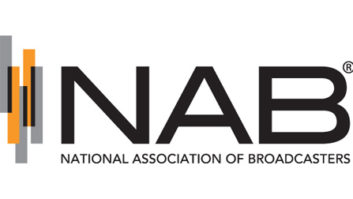
FCC Chairman Ajit Pai’s aggressive timeline to reallocate part of the C-Band for advanced wireless services, including 5G, is now on full display. Radio entities are starting to look ahead to the possible infrastructure implications and costs.
The C-Band is a 500-megahertz segment of spectrum now used by satellite companies to distribute audio and video content to broadcasters and cable systems. Pai’s plan, which he detailed in February in draft form and which was approved in late February, would make the lower 280 megahertz of the C-Band (3.7–3.98 GHz) available for flexible use, including 5G, through a public auction, which the chairman wants to begin in December.
Incumbent satellite services are to be repacked from that 500 MHz to the upper 200 megahertz of the band (4.0–4.2 GHz). The FCC’s goal is for incumbent earth station operators to be adequately transitioned and able to continue operations without interruption.
In addition, there will be a 20 megahertz guard band (3.98–4 GHz) cleared during the process to prevent interference. The fixed satellite services community agreed with the FCC that 200 megahertz of spectrum is sufficient to support current satellite services and even allow for some expansion of services.
Relocation costs of the band’s current users will be covered, according to the chairman’s plan. The FCC acknowledges new satellites will need to be launched and filters replaced on earth stations as part of the repack.
The Report and Order specifies “reasonable relocation costs of the C-Band’s current users will be covered through reimbursement by the winning bidders in the C-Band auction,” according to the FCC.
STATION COSTS
There are provisions within the order that spell out reimbursements to incumbents, such as radio stations, that have C-Band earth stations that will be affected by the relocation of spectrum (see Reimbursement Considerations section ). There are approximately 20,000 receive-only dishes in the contiguous U.S., according to the FCC.
“There has been extensive discussion of the work and costs that could be incurred by incumbent earth stations, those who were properly registered with the commission. And the possible costs they’ll be reimbursed for, such as new filters, potentially labor costs to re-point antennas or installing of new antennas,” according to a senior FCC official.
Details on eligibility requirements and how stations would submit for reimbursement are expected later in 2020.
At least one source believes that a substantial number of small rural radio and television stations and private networks that rely on C-Band programming failed to submit registration filings and so presumably will be ineligible for reimbursement funds.
Groups like the NAB, SBE and Westwood One urged stations to register during the FCC’s 2018 window. But the source, who works in the satellite infrastructure part of the industry, believes that possibly thousands of earth stations used by radio stations may remain unregistered because the application fee and burdens of registration were cost-prohibitive for some providers.
The FCC acknowledged such concerns in its draft but wrote that it will not open another window for the registration of earth stations.
“I estimate at least 25% of radio stations did not register their C-Band downlinks before the deadline, and they will be cut off from reimbursement of their costs to upgrade dishes,” according to the source. “Their decision may have cost them each $1,000 to $5,000 because new equipment must be installed on their dish to block upcoming 5G cellular interference.”
The insider says the FCC’s reimbursement plan is “quite generous” and will protect the majority of radio broadcasters but that unregistered earth station owners will have to pay for the new gear out of their own pockets.
“That might be a $500 dish filter and a few hundred dollars for labor to repoint it, but what happens if the dish has marginal reception already? It might become unusable, and then you need a new $4,000 dish and more money for a new pad,” he said.
“EXTRAORDINARILY COMPLEX”
The National Association of Broadcasters called Pai’s plan “an important step toward ensuring a stable C-Band ecosystem following reallocation,” said NAB Executive Vice President of Communications Dennis Wharton.
National Public Radio has been pressing the FCC for clarity about the financial ramifications of a massive C-Band migration of satellite earth-stations. NPR has a lot riding on the FCC’s decision since the Public Radio Satellite System depends on C-Band for distribution of programming to approximately 1,278 public radio stations.
“Because the process to clear the lower portion of the C-Band for 5G services and to repack incumbent C-Band users in the upper portion of the band will be extraordinarily complex, NPR has encouraged the commission to invite public comment at key points as satellite operators’ transition plans and activities progress, so that any deficiencies may be identified and resolved,” it wrote.
NPR, according to an ex parte notice about its communications with the FCC, proposed measures to ensure reimbursement of all transition-related costs incurred by current C-Band users and to mitigate interference from new 5G services.
The FCC, which says it has broad support for its C-Band plan across Capitol Hill, expects the cost for all incumbents to transition in a repack to range from $3 billion to $5 billion, which includes new satellites and filters on earth stations. Specifically, the FCC estimated earth station costs in the range of $1 billion to $2 billion for repacking transponders, filter installing, re-pointing earth station dishes and antenna feeding.
Pai says the FCC is committed to covering all relocation costs incurred by satellite operators and broadcast networks. His draft Report and Order cautioned: “We recognize that incumbents may attempt to gold-plate their systems in a transition like this. Let us be clear: Incumbents will not receive more reimbursement than necessary, and we require that, to qualify for reimbursement, all relocation costs must be reasonable.
“We expect incumbents to obtain the lowest-cost equipment that most closely replaces their existing equipment or, as needed, provides the targeted technology upgrades necessary for clearing the lower 300 megahertz.”
In an ex parte notice of its own, the NAB said it understands the interest in “avoiding gold-plating of facilities during the transition,” but “the commission should not require or allow the clearinghouse to second-guess specific commitments already made by the satellite operators that are necessary to ensure continued service, or specific technology choices made by programmers. This is particularly important because there will not be one-size-fits-all solutions for the transition.”
Under an accelerated relocation incentive package, Pai’s plan will allow fixed satellite operators and other incumbents to tap a pool of another $9.7 billion if they meet the accelerated milestones. The FCC specifies it will offer incumbent space station operators the option to accelerate the repack process for the lower 120 megahertz during Phase I of the accelerated relocation, which needs to be completed by Dec. 5, 2021. To be eligible for Phase II payments, operators must clear the remaining 180 megahertz by Dec. 5, 2023.
Pai’s plan requires the 280 megahertz of spectrum to be transitioned to flexible use in the United States by Dec. 5, 2025.
“We find a mix of carrots and sticks best accommodates the need to clear FSS operations out of the lower 300 megahertz as quickly as possible to facilitate new terrestrial, flexible-use operations and the need to preserve the content distribution ecosystem now contained in the C-Band,” according to the proposal.
The FCC for now will retain C-Band operation in areas outside the contiguous U.S. It excludes Alaska, Hawaii and Puerto Rico from being repurposed for terrestrial wireless use.
The lower 280 megahertz of the C-Band will be made available for flexible use, including 5G, through a public auction (Auction 107), which the chairman wants to begin in December. Pai did not disclose how much the FCC hopes to generate from the spectrum auction to 5G service providers.
The push for deploying advanced wireless services has been high on Pai’s agenda, observers said. The FCC’s 5G FAST plan is to free up more spectrum for wireless carriers and promote wireless infrastructure deployment, according to FCC filings.
The Report and Order establishes a Relocation Payment Clearinghouse to manage the intake, payout and auditing of relocation funds for incumbents. It also establishes a Relocation Coordinator to oversee the technical aspect of the transition and develop timelines, according to a senior FCC official. The commission will require satellite operators to submit a transition plan by this summer describing the estimated costs and the necessary steps needed to clear the bottom 300 MHz of spectrum.
The NAB in February asked the commission to allow satellite customers to comment on each satellite operator’s transition plan before approving it.
The C-Band Alliance, which included satellite operators Intelsat, SES and Telesat, had originally proposed a private sale of the spectrum, which was rejected by the FCC. The C-Band Alliance has since dissolved.
SES and Telesat issued statements praising the FCC’s leadership on the issue following the release of the Report and Order in February.
However, some industry observers still worry the FCC spectrum auction could face legal challenges and delays. Bloomberg Law reported in early March that Intelsat is considering a possible Chapter 11 bankruptcy filing if the FCC fails to boost the compensation levels paid to operators for vacating part of the C-Band spectrum. The FCC has said it won’t reconsider.
Intelsat is eligible to receive up to $4.87 billion in proceeds, according to the Report and Order, which is about half of the compensation pool.
The FCC makes the argument that there is plenty of room for all of the lower C-Band to be repacked to the upper 200 MHz.
“In March 2019, the most recent month of data collected, the combined FSS downlink capacity and usage of the 66 satellites was, respectively, 59,427 megahertz and 33,138 megahertz in total with 19,961 megahertz of usage providing service to the United States (i.e., 33.59% of the total capacity of the 66 satellites),” a senior FCC official wrote in an email to Radio World.
The FCC adopted the C-Band Report and Order at its open meeting in late February, bypassing a notice of proposed rulemaking. The FCC expected to open a comment period on the auction procedures.
Chris Imlay, general counsel to the Society of Broadcast Engineers, said fairness in spectrum allocations decision-making is rare, because there is almost always a preferred outcome determined in advance.
“In this case, the FCC’s only real priority was to roll out 5G, and try to keep up with the rest of the world in the process,” he said. “A more fair way to proceed, as I saw the matter, would have been for FCC to internationally harmonize the 5G mid-band spectrum allocation, and match the European plan to use 3.4-3.8 GHz instead of 3.7-4.2 GHz. Had FCC done this, the C-Band would have been left largely alone.”
REIMBURSEMENT CONSIDERATIONS
Here’s what the FCC C-Band Report and Order says about reimbursements for operators of incumbent earth stations:
For incumbent earth station operators, we expect the transition will require two types of system changes that may occur separately or simultaneously: earth station migration and earth station filtering.
First, earth station migration includes any necessary changes that will allow the earth stations to receive C-Band services on new frequencies or from new satellites once satellite operators have relocated their services into the upper portion of the band. For example, in instances where satellite transmissions need to be moved to a new frequency or to a new satellite, earth stations currently receiving those transmissions may need to be retuned or repointed in order to receive on the new frequencies or from the new satellite. Such a transition requires a “dual illumination” period, during which the same programming is simultaneously downlinked over the original frequency or satellite and over the new frequency or satellite so that the receiving earth station can continue receiving transmissions from the original frequency or satellite until it retunes or repoints the antenna to receive on the new frequency or satellite.
Earth station migration may also require the installation of new equipment or software at earth station uplink and/or downlink locations for customers identified for technology upgrades necessary to facilitate the repack, such as compression technology or modulation.
Second, passband filters must be installed on all existing earth stations to block signals from adjacent channels and to prevent harmful interference from new flexible-use operations. Earth station filtering can occur either simultaneously with, or after, the earth station migration. All of these earth station migration actions must be coordinated with satellite transponder clearing in order for earth stations to continue receiving existing C-Band services during and after the transition. As such, we expect relocation costs to include the cost to migrate and filter earth stations, including costs to retune, repoint and install new antennas and install filters and compression software and hardware.
Some commenters request that the commission give incumbent earth station operators flexibility to replace existing earth stations with fiber in their transition planning. We agree that providing incumbent earth station operators flexibility may allow them to make efficient decisions that better accommodate their needs. But we also recognize that replacing existing C-Band operations with fiber or other terrestrial services may be, for some earth stations, more expensive by an order of magnitude.
As such, incumbent earth stations operators will have a choice: They may either accept reimbursement for the reasonable relocation costs by maintaining satellite reception or they may accept a lump sum reimbursement for all of their incumbent earth stations based on the average, estimated costs of relocating all of their incumbent earth stations. We require incumbent earth station operators (including any affiliates) to elect one of these two options, which must apply to all of each earth station operator’s earth stations, in order to prevent any improper cost shifting. And we require the decision to accept a lump sum reimbursement to be irrevocable — by accepting the lump sum, the incumbent takes on the risk that the lump sum will be insufficient to cover all its relocation costs — to ensure that incumbents have the appropriate incentive to accept the lump sum only if doing so is truly the more efficient option. We direct the Wireless Telecommunications Bureau to release a Public Notice announcing the lump sum that will be available per incumbent earth station as well as the process for electing lump sum payments by September 30, 2020.
The commission will allow reimbursement of some soft costs — legitimate and prudent transaction expenses incurred by incumbents that are directly attributable to relocation. We define soft costs as transactional expenses such as engineering, consulting and attorney fees. We find it reasonable to establish rebuttal resumption that soft costs should not exceed 2% of relocation hard costs.












